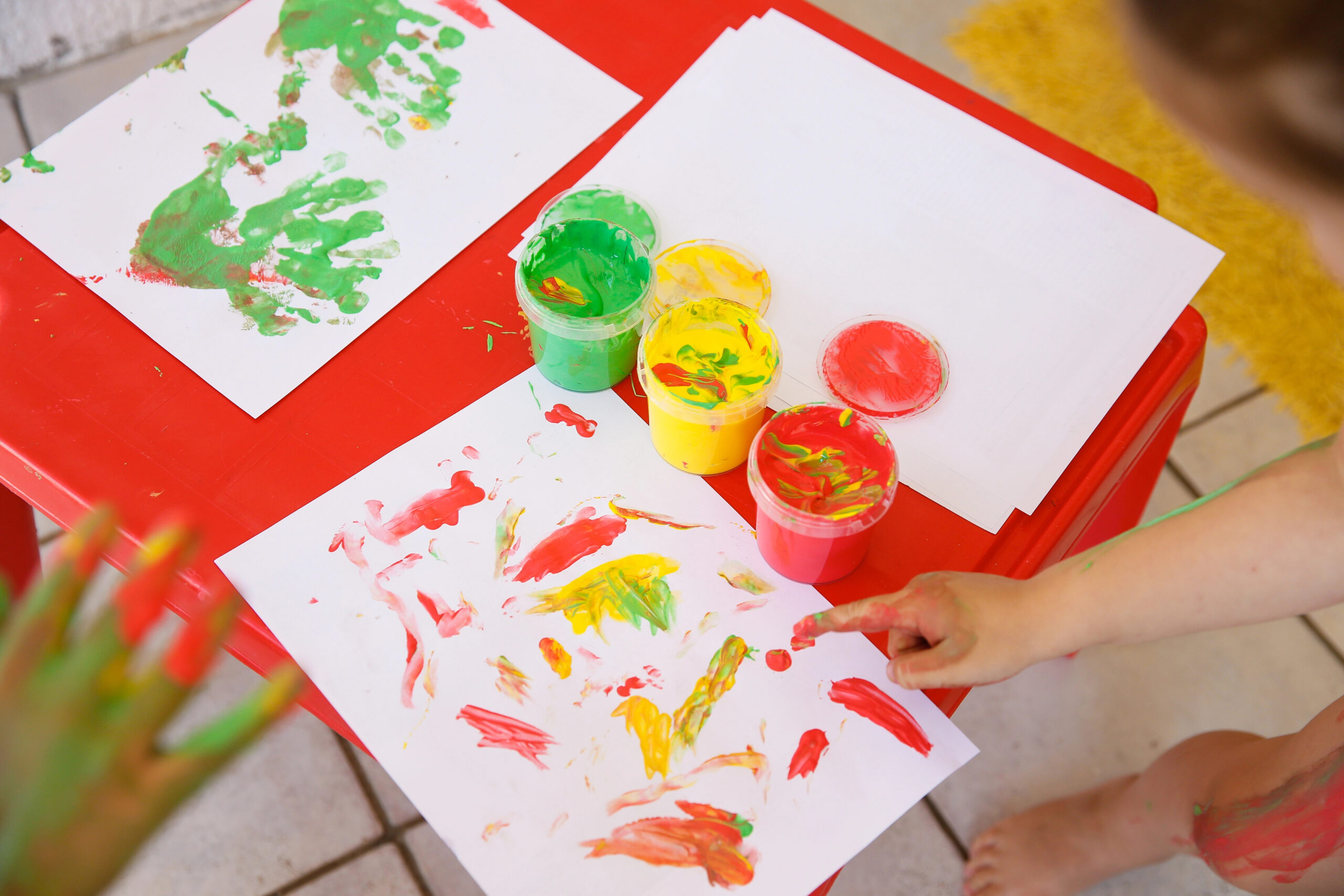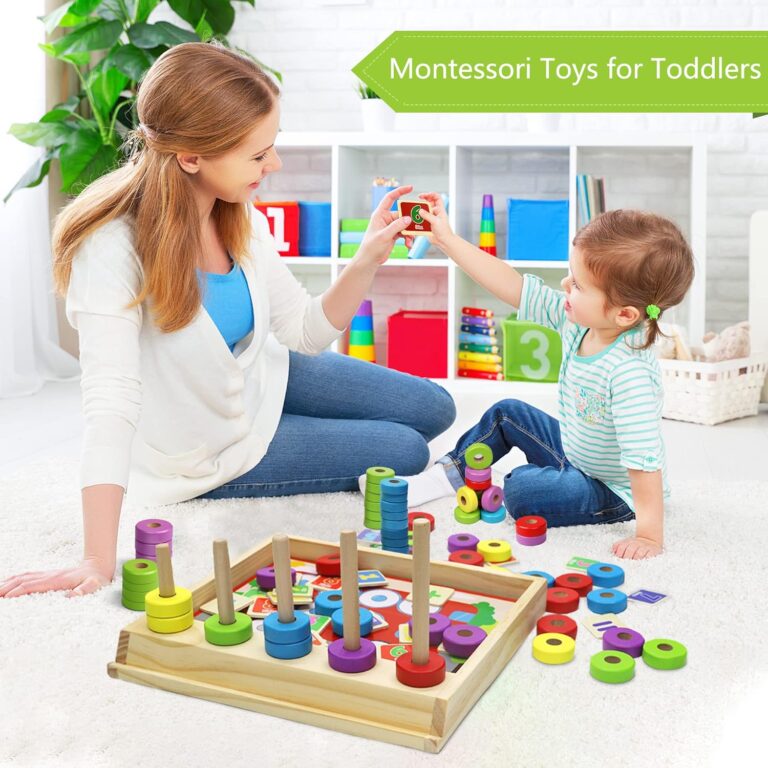10 Amazing Benefits of Sensory Play for toddleRs
Sensory play is a crucial aspect of early childhood development, offering numerous benefits that support a toddler’s growth and learning. As an occupational therapist, I have seen firsthand how sensory play can positively impact children.
This post will delve into the ten significant benefits of sensory play for toddlers, providing insights for parents on how to incorporate these activities into daily routines.
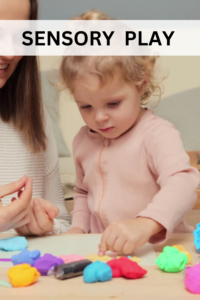
Hi! My name is Marra and I’m a mama and a pediatric occupational therapist who has years of experience working with children with different developmental needs and helping their parents navigate the ups and downs of child development.
I loved being a support person for parents learning about different sensory needs, sensory processing, and their child’s individual needs.
I would often recommend to families toys or sensory play activities to help improve their child’s sensory processing and developmental skills. I’d like to share the most common DIY sensory processing toys recommendations with you.
This post is all about the top 10 amazing benefits of sensory play activities for child development and why every child no matter there unique strengths and needs should participate in sensory play.
What is Sensory processing
Before exploring sensory play, let’s first understand sensory processing. Our sensory system is vital in shaping how we perceive and respond to our surroundings.
Sensory processing involves our ability to take in information from our environment, filter through relevant details, understand it, and choose an appropriate response to the sensory input.
We have eight sensory systems for receiving input from our surroundings. The familiar five senses include sight, hearing, smell, taste, and touch.
Additionally, there are three lesser-known sensory systems: vestibular, proprioceptive, and interoception. The vestibular sense pertains to our sennse of movement gravity and our body’s response to it.
Proprioception involves our awareness of deep pressure and body positioning. Interoception is our sense of internal bodily sensations.
For a more in-depth understanding of sensory processing, feel free to explore the linked blog below
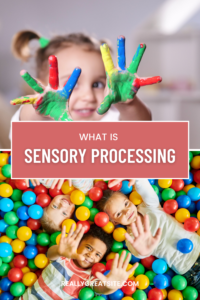
10 powerful benefits of sensory play for toddlers
Enhances Cognitive Developmen
Sensory play stimulates a toddler’s brain, fostering neural connections that enhance cognitive growth. Engaging in activities that involve touch, sight, sound, taste, and smell helps toddlers learn about their environment.
For example, playing with water or sand can teach concepts of volume, texture, and cause and effect. Sensory activities encourage exploration and experimentation, leading to a better understanding of the world.
Through sensory play, toddlers engage in activities that require them to explore, investigate, and experiment. These activities lay the groundwork for scientific thinking and reasoning.
For example, when a child pours water from one container to another, they learn about concepts such as volume, weight, and displacement.
When they play with different textures, they understand properties like roughness, smoothness, and stickiness. These hands-on experiences build a strong foundation for later learning in subjects like math and science.
Practical Tip: Create a sensory bin with rice, beans, or pasta and let your child explore the different textures. Hide small toys or objects for them to find and identify.
Change the contents regularly to introduce new sensations and concepts, such as colored water, gel beads, or shaving cream. Additionally, consider outdoor sensory play, like exploring nature, feeling different types of leaves, or playing in the mud, to expand their sensory experiences.
Supports Language Development
When toddlers engage in sensory play, they are often exposed to new vocabulary and concepts. Describing what they are feeling, seeing, or doing helps expand their language skills.
Activities like playing with play dough or finger painting can prompt conversations about colors, shapes, and actions. Sensory play can also involve storytelling, where children create narratives based on their sensory experiences.
Language development is crucial at this stage, and sensory play provides a natural context for language learning. When toddlers manipulate different objects, they learn new words and concepts related to those objects.
For example, playing with sand can introduce words like “gritty,” “smooth,” “wet,” and “dry.” As they describe their actions and feelings, they practice using language to communicate effectively.
Practical Tip: Encourage your child to talk about their sensory experiences. Ask open-ended questions like, “How does this feel?” or “What color is this?”
Introduce new words related to the activities, such as “squishy,” “crunchy,” or “smooth.” Read books that involve sensory descriptions and ask your child to relate them to their play.
Additionally, incorporate songs and rhymes that describe sensory experiences to reinforce language learning in a fun and engaging way.
Develops Fine Motor Skills
Manipulating small objects during sensory play helps toddlers develop fine motor skills.
Actions like scooping, pouring, pinching, and squeezing strengthen hand and finger muscles, preparing them for tasks like writing and buttoning clothes. Fine motor skills are crucial for independence and performing daily activities.
Fine motor skills involve the coordination of small muscles, particularly those in the hands and fingers, and are essential for tasks such as writing, drawing, and using utensils.
Sensory play provides a variety of opportunities for toddlers to practice these skills. For example, squeezing play dough strengthens the hand muscles, while threading beads onto a string improves hand-eye coordination and dexterity.
Practical Tip: Provide your toddler with a variety of tools, such as tongs, scoops, and tweezers, to use during sensory play.
These tools can help enhance their fine motor skills. Incorporate activities like threading beads onto strings, using clothespins, or playing with small construction toys.
Additionally, encourage activities that require precise movements, such as picking up small objects with tweezers or placing stickers on a surface.

Promotes Social Interaction
Sensory play often involves cooperative activities that encourage toddlers to interact with their peers. Sharing materials, taking turns, and collaborating on building or creating projects help develop social skills and build friendships.
Through sensory play, children learn to communicate, negotiate, and understand the perspectives of others.
Social skills are vital for building relationships and functioning in group settings. Sensory play offers a platform for toddlers to practice these skills in a fun and engaging way.
For instance, a sensory table with water or sand can become a communal activity where children share tools, negotiate space, and collaborate on creating structures.
These interactions help children learn important social behaviors, such as sharing, empathy, and cooperation.
Practical Tip: Arrange playdates with other toddlers and set up a sensory play station. Encourage the children to work together and communicate during their play.
Provide group activities like making a sensory collage, building a sandcastle, or creating a sensory garden. Additionally, model positive social interactions and guide your child in practicing these skills during sensory play.
Encourages Problem-Solving Skills
Sensory play provides opportunities for toddlers to encounter and solve problems.
Whether figuring out how to build a sandcastle that won’t collapse or discovering how different objects float or sink in water, these activities promote critical thinking and problem-solving abilities.
Problem-solving skills are essential for cognitive development and adapting to new situations.
Problem-solving is a crucial cognitive skill that enables children to think critically and adapt to new situations. Sensory play presents numerous challenges that require children to use their problem-solving abilities.
For example, figuring out how to balance blocks to build a stable tower or discovering why certain objects sink while others float fosters analytical thinking and experimentation.
Practical Tip: Present your child with challenges during sensory play, such as building a structure with specific materials or finding ways to transport water without spilling.
Use puzzles, mazes, and sorting activities that require thinking and strategy. Additionally, encourage your child to think aloud and verbalize their problem-solving process, which can help reinforce their learning.

Reduces Anxiety and Builds Confidence
Engaging in sensory play can be calming and therapeutic for toddlers. The repetitive actions and focus required can help reduce anxiety and stress.
Successfully navigating sensory activities also boosts a child’s confidence and self-esteem. Sensory play provides a safe and enjoyable way for children to express themselves and cope with emotions.
Sensory play offers a therapeutic outlet for children to manage stress and anxiety. The tactile and repetitive nature of many sensory activities, such as squeezing a stress ball or running fingers through sand, can be soothing and help children regulate their emotions.
Additionally, successfully completing sensory tasks boosts self-confidence and fosters a sense of accomplishment.
Practical Tip: Create a calm sensory corner with soft materials, calming scents, and soothing sounds. Allow your child to retreat to this space when they need to relax and unwind. Include sensory bottles, weighted blankets, or fidget toys to help them feel secure and calm.
Additionally, teach your child deep breathing exercises and mindfulness techniques to use alongside sensory activities for added stress relief.
Enhances Sensory Processing Skills
Through sensory play, toddlers learn to process and respond to sensory information. This is particularly beneficial for children with sensory processing difficulties, as it helps them become more comfortable with different sensations and stimuli.
Sensory processing skills are essential for navigating the world and interacting with the environment.
Sensory processing involves the brain’s ability to interpret and organize sensory information from the environment. For some children, sensory processing can be challenging, leading to over- or under-responsiveness to stimuli.
Sensory play helps children practice processing sensory input in a controlled and enjoyable way, improving their ability to handle various sensory experiences in daily life.
Practical Tip: Gradually introduce new sensory experiences in a controlled and supportive environment. Observe your child’s reactions and adjust the activities based on their comfort level.
Use a variety of textures, sounds, and scents to provide a well-rounded sensory experience. Additionally, incorporate sensory activities into your child’s daily routine to help them build tolerance and adaptability over time.
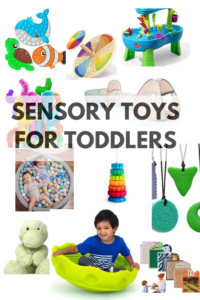
Stimulates Creativity and Imagination
Sensory play fosters creativity and imaginative thinking. Activities such as molding clay, mixing colors, or creating sensory bottles encourage toddlers to use their imagination and explore new ideas.
Creativity and imagination are crucial for problem-solving, storytelling, and cognitive development.
Creativity is an essential skill that allows children to think outside the box and approach problems with innovative solutions. Sensory play provides a blank canvas for children to express their creativity and imagination.
Whether they are building imaginary worlds with blocks or creating stories with sensory materials, these activities promote creative thinking and self-expression.
Practical Tip: Provide open-ended sensory materials like clay, paint, and natural objects. Encourage your child to create and explore without specific instructions or outcomes.
Offer themed sensory bins, such as a beach scene, dinosaur world, or outer space adventure. Additionally, join in the play and model creative thinking by suggesting new ways to use the materials and creating imaginative scenarios together.
Improves Focus and Attention
Participating in sensory activities can improve a toddler’s ability to concentrate and maintain attention.
The engaging nature of sensory play captures their interest and encourages sustained focus. Developing focus and attention skills is essential for learning and completing tasks.
Focus and attention are critical skills for academic success and daily functioning. Sensory play activities often require children to concentrate on specific tasks, such as sorting objects by color or building a structure with blocks.
These activities help children practice maintaining focus and ignoring distractions, skills that are transferable to other areas of their lives.
Practical Tip: Set up sensory play sessions in a distraction-free environment. Gradually increase the duration of the activities to help build your child’s attention span.
Use sensory activities that require concentration, such as sorting objects by color or size, or following a sequence of steps.
Additionally, introduce mindfulness activities, such as focusing on breathing or listening to calming sounds, to enhance their ability to concentrate.
Supports Emotional Development
Sensory play allows toddlers to express and regulate their emotions. Activities like squeezing stress balls, playing with water, or engaging in messy play can help children release pent-up emotions and develop better emotional control.
Emotional development is vital for forming healthy relationships and coping with challenges
Emotional development involves the ability to recognize, express, and manage emotions effectively. Sensory play provides a safe space for children to explore their feelings and practice emotional regulation.
For example, playing with water can be a calming activity that helps children relax, while messy play can provide an outlet for expressing excitement or frustration.
Practical Tip: Encourage your child to express their feelings during sensory play. Provide opportunities for them to engage in activities that match their emotional needs, whether calming or stimulating.
Use sensory activities to discuss emotions and teach coping strategies, such as deep breathing or using a sensory toy to self-soothe. Additionally, create a “feelings chart” where your child can identify and discuss their emotions during and after sensory play.
Sensory play is a powerful tool for supporting your toddler’s development in multiple areas. By incorporating sensory activities into your child’s daily routine, you can help enhance their cognitive, language, motor, social, and emotional skills.
Remember to observe your child’s responses and adjust the activities to suit their individual needs and preferences. With a little creativity and patience, sensory play can become a cherished and beneficial part of your toddler’s growth journey.
Engaging in sensory play not only provides immediate benefits but also lays the foundation for lifelong learning and development.
As parents, you have the opportunity to create enriching sensory experiences that will support your child’s overall well-being and growth. Embrace the mess, enjoy the exploration, and watch your toddler thrive through the wonders of sensory play.
By integrating sensory play into your daily routine, you can create a rich and stimulating environment that nurtures your child’s natural curiosity and supports their developmental milestones.
Whether through structured activities or spontaneous exploration, sensory play offers endless possibilities for learning and growth. So gather your materials, set up your sensory stations, and let the adventure begin—your toddler’s development will thank you for it.

